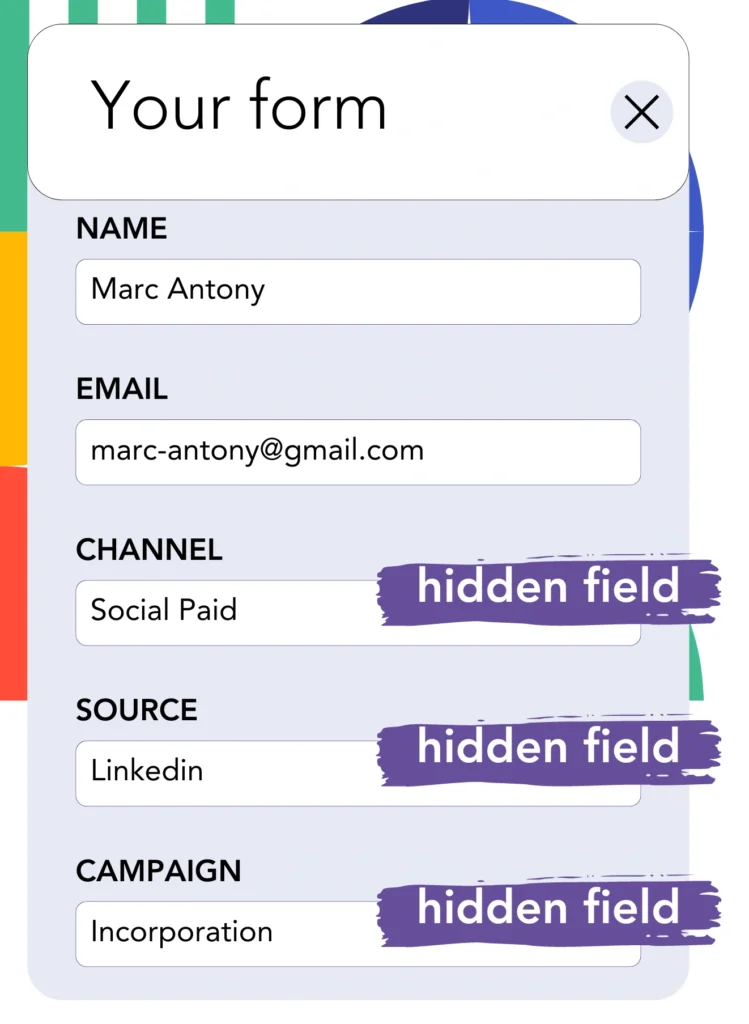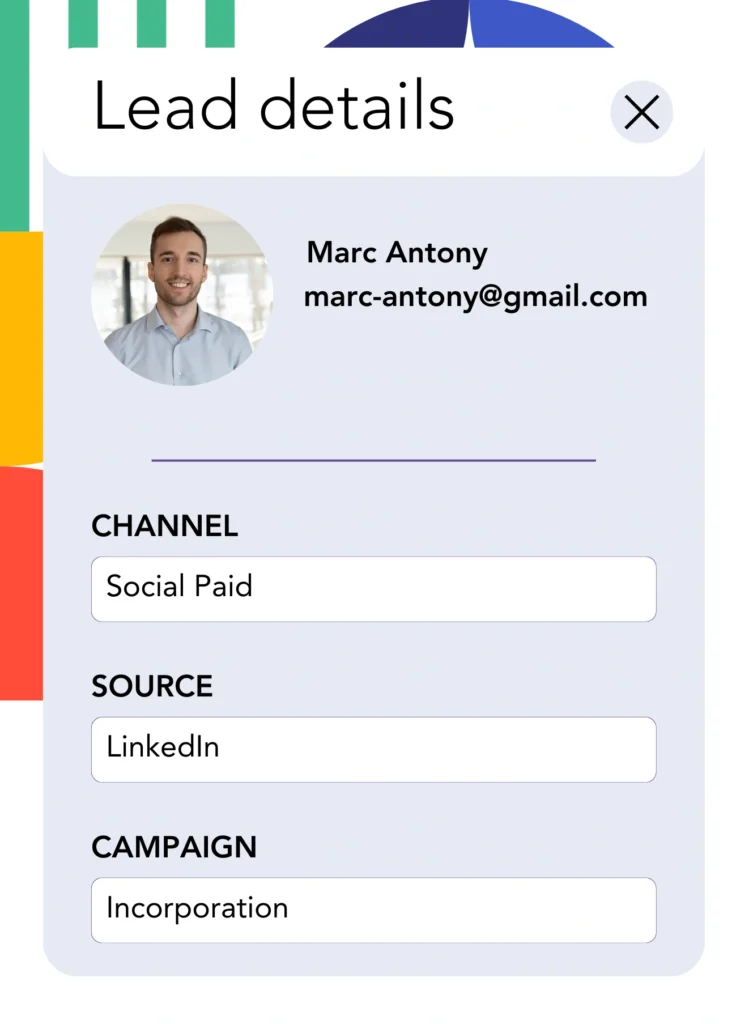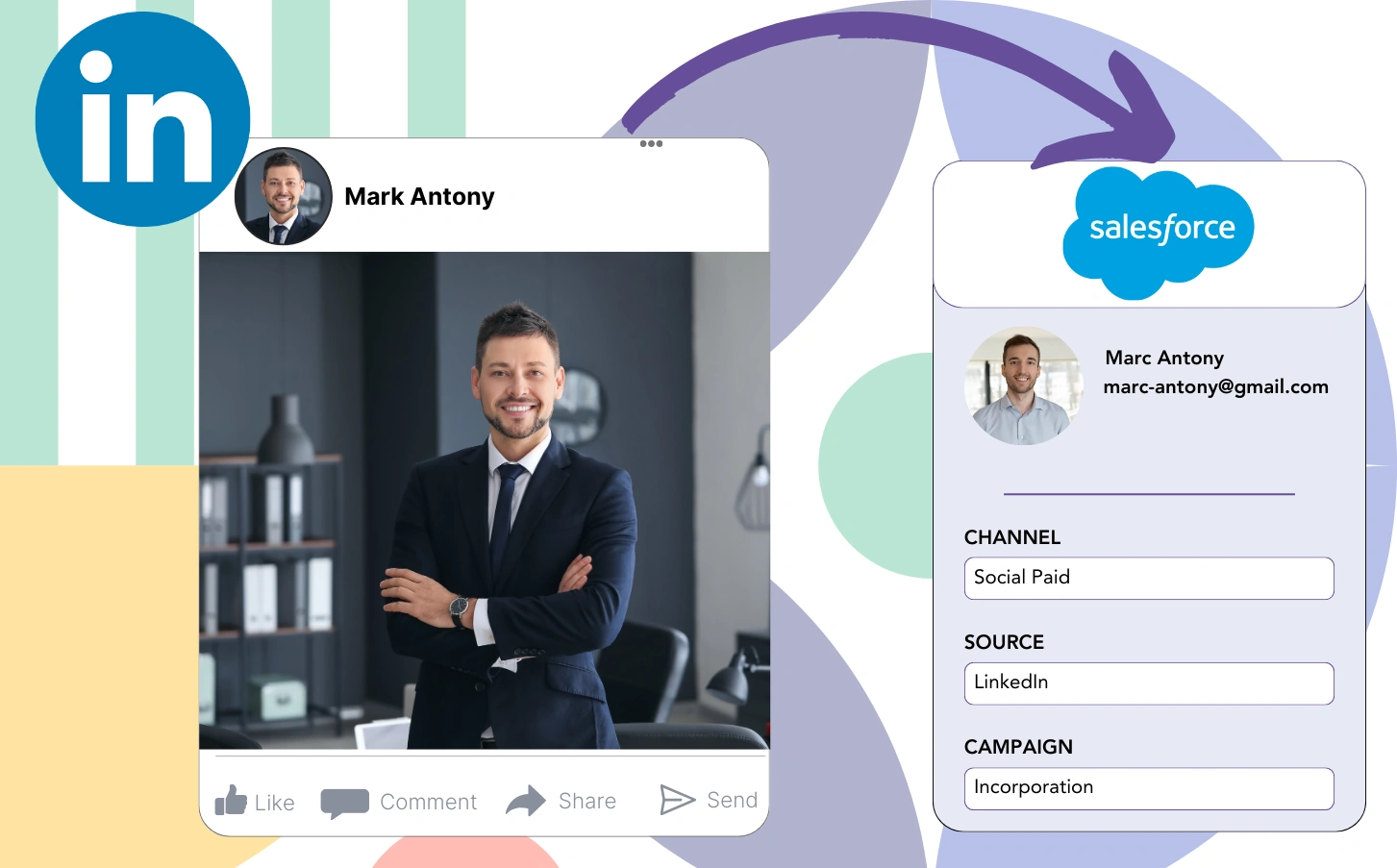You run ads on LinkedIn and send your leads to Salesforce. But you can’t track which LinkedIn ad each lead comes from?
And once a lead is converted into a paid customer, you can’t link this particular customer to a specific LinkedIn ad.
This hole in the tracking makes it hard to manage your LinkedIn ads. So you end up spending on several ads simultaneously without knowing which one drives your leads and revenue.
Hopefully, a simple tool can link each lead to the specific LinkedIn campaign group, campaign, ad, and audience that generated it.
Let’s dive into it!
How to capture LinkedIn ads in Salesforce
Step 1: Add Leadsources in the head tag of your website

Leadsources is a simple tool that tracks the source of your leads. Once added to your website, it tracks up to 7 lead source data for each lead you generate.
Create an account on Leadsources.io – it’s free.
Insert the Leadsources tracking code into the head tag of your website by following this guide.
Step 2: Add the UTM parameters to your LinkedIn ads campaigns

Include the UTM parameters you wish to track in your LinkedIn ads.
For instance, you can monitor the campaign, ad, and audience using these UTM parameters:
- UTM_source=linkedin
- UTM_campaign=campaign-name
- UTM_term=audience-name
- UTM_content=ad-name
Leadsources collects all lead source data—including channel, landing page, and landing page subfolder—even if UTM parameters are not used, to ensure a comprehensive lead source tracking for each lead.
Step 3: Add the hidden fields in your form

Add hidden fields in your form – Leadsources will use them to store the lead source data directly in your form for every form submission.
When a new lead completes your form, Leadsources automatically fills out the hidden fields with the LinkedIn ads information.
For detailed instructions on adding hidden fields, please consult our guide.
Step 4: Capture the LinkedIn ads data in Salesforce

When users click on your ads and land on your site, Leadsources tracks the LinkedIn ads data, including campaign, audience, and ad.
Leadsources automatically fills the hidden fields in your form with the ads data from LinkedIn.
When the form is submitted, you can automatically send the LinkedIn ads data and your leads to Salesforce by simply linking your form to Salesforce.
How does Leadsources work?
Once installed on your site, Leadsources captures the LinkedIn ads information each time a visitor lands on your site.
This LinkedIn ads data is stored in your form’s hidden fields. Upon submission of the form, this data is sent to Salesforce, alongside the leads details (name, email, etc.).
The following data is tracked by Leadsources for each visitor:
- Channel
- Source
- Campaign
- Content
- Term
- Landing page
- Landing page subfolder
Even without UTM parameters, Leadsources tracks the lead source data by using the referrer.
In some cases, it is not possible to use UTM parameters, like when traffic comes from organic channels:
- Google Search
- Instagram bio link
- Social media posts
- Etc.
In these cases, most lead source tracking tools cannot capture the source of the leads as they rely only on UTM parameters to collect the lead source data. However, Leadsources still collects certain lead source information even when UTM parameters cannot be used:
- Channel
- Source
- Landing page
- Landing page subfolder
Therefore, unlike many other tools, Leadsources offers comprehensive lead data tracking across every channel:
- Organic Search
- Paid Search
- Organic Social
- Paid Social
- Referral
- Affiliate
- Display Advertising
- Direct Traffic
Additionally, Leadsources automatically categorizes your traffic by channel, providing a clean dataset as a result.
To conclude, Leadsources is a simple and robust tool that captures comprehensive lead source data across all channels in a unique place.
Performance reports: Lead, sales, and revenue by source
By tracking LinkedIn ads data in Salesforce, you can create multiple performance reports, such as:
- Leads, sales, and revenue by channel
- Leads, sales, and revenue by campaign
- Leads, sales, and revenue by ad
- Leads, sales, and revenue by audience
- Leads, sales, and revenue by landing page
- Leads, sales, and revenue by landing page subfolder
As a result, you can adapt your LinkedIn budget according to the channel, campaign, ad, and audience that drive your leads, sales, and revenue.
Let’s review the different kinds of reports you can generate.
1. Lead source reports
These reports show the number of leads generated by:
- Channel
- Campaign
- Ad
- Audience
- Landing page
- Landing page subfolder
Example #1:
Start with identifying the channel that generates most of your leads with the “Leads by Channel” report.

Example #2:
By identifying the highest-performing channel (for instance, LinkedIn), you can focus your efforts on analyzing leads from each LinkedIn campaign.

Example #3:
After identifying the LinkedIn campaign that produces the most leads, you can investigate which exact audience, or ad is responsible for these leads.

2. Sales and revenue source reports
Although understanding which LinkedIn ads generate the most leads is valuable, we must ask ourselves: do these ads impact our revenue?
Connect your leads to a CRM like Salesforce, to filter the leads that transformed into paid customers. You can then monitor the sales and revenue generated from different channels, sources, landing pages, and more.
You can then modify your marketing strategy to focus on the channels, sources, campaigns, audiences, and ads that generate revenue.
To illustrate this, let’s consider the following scenario:
| Channels | Search Paid | Social Paid |
| Leads | 50 | 75 |
| Sales | 5 | 6 |
| Average order value | $150 | $100 |
| Revenue | $750 | $600 |
After launching ads on Google and LinkedIn, the initial “Leads by Channel” report indicated that Social Paid ads (LinkedIn) produced more leads than Search Paid ads.
However, upon exporting your sales and revenue data from your CRM, you discovered that the Search Paid channel generated higher revenue with fewer leads compared to the Social Paid channel. As a result, you decided to increase the budget for the Search Paid channel.
Additionally, you can generate various other sales and revenue reports:
- Sales and revenue by source
- Sales and revenue by campaign
- Sales and revenue by content (aka. ad)
- Sales and revenue by term (aka. audience)
- Sales and revenue by landing page
- Sales and revenue by landing page subfolder
LeadSources tracks the source of each lead in Salesforce, whether they come from ads, organic search, social, email, etc. and syncs that data with each submission. See the full breakdown on the lead source in Salesforce page.

